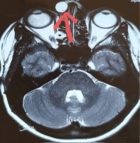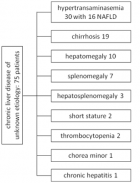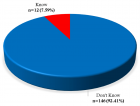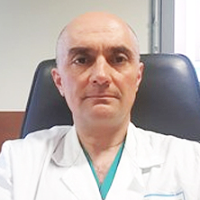Previous Issue (Volume - 8 | Issue - 1)
“Thyroid”: Letter to the Editor, Radioactive Iodine: A Living History
Published on: 7th March, 2024
The history of the origin of the medical uses of Radioiodine (RAI) has been compromised by false narratives as recently as June 2023 in the “Thyroid “article “Radioactive Iodine: A Living History”. Primary sources document Dr. Saul Hertz (1905 - 1950) as solely conceiving of the medical uses of RAI, being the first and foremost to develop the experimental data, bringing RAI from bench to bedside, and extending the use of radionuclides to diagnose and/or treat cancer and other conditions. Dr Hertz predicted and worked toward conquering cancer with other radionuclides. Saul Hertz overcame the racism of his time, a world war interrupting his first clinical study, a strong pushback from the surgeons, and unethical medical publishing practices. Today, Nuclear Medicine, Radiopharmacy, Medical Physics, and other specialties are collaborating and actively building on Saul Hertz’s enduring foundational work.
Exploring the Prognostic Efficacy of Machine Learning Models in Predicting Adenocarcinoma of the Esophagogastric Junction
Published on: 7th March, 2024
Objective: To investigate the value of machine learning and traditional Cox regression models in predicting postoperative survivorship in patients with adenocarcinoma of the esophagogastric junction (AEG).Methods: This study analyzed clinicopathological data from 203 patients. The Cox proportional risk model and four machine learning models were constructed and internally validated. ROC curves, calibration curves, and clinical decision curves (DCA) were generated. Model performance was assessed using the area under the curve (AUC), while calibration curves determined the fit and clinical significance of the model.Results: The AUC values of the 3-year survival in the validation set for the Cox regression model, extreme gradient boosting, random forest, support vector machine, and multilayer perceptron were 0.870, 0.901, 0.791, 0.832, and 0.725, respectively. The AUC values of 5-year survival in the validation set for each model were 0.915, 0.916, 0.758, 0.905, and 0.737, respectively. The internal validation AUC values for the four machine learning models, extreme gradient boosting, random forest, support vector machine, and multilayer perceptron, were 0.818, 0.772, 0.804, and 0.745, respectively.Conclusion: Compared with Cox regression models, machine learning models do not need to satisfy the assumption of equal proportionality or linear regression models, can include more influencing variables, and have good prediction performance for 3-year and 5-year survival rates of AEG patients, among which, XGBoost models are the most stable and have significantly better prediction performance than other machine learning methods and are practical and reliable.
Effect of TAK242 on MCP-1 and TGF-β in COPD Rats
Published on: 13th March, 2024
Objective: To investigate the mechanism of MCP-1 and TGF-β regulation by TAK242 in COPD rats. Methods: Thirty-six SD rats were randomly divided into normal, COPD control, and TAK242 groups. The normal group was freely fed, and the other groups used the method of fumigation plus lipopolysaccharide tracheal drip to establish an experimental animal model of COPD. After successful modeling, each experimental group received 0.9% NaCl solution and corresponding drugs by intraperitoneal injection for 7 d. After drug administration, lung function was examined; pathological changes in lung tissue were observed by light microscopy with hematoxylin-eosin staining; mRNA expression of MCP-1 and TGF-β was detected by q-PCR; and protein expression of MCP-1 and TGF-β in lung tissue was detected by Western blot and IHC, TGF-β protein expression in rat lung tissue. Results: Compared with the normal group, rats in the COPD control group showed signs and symptoms of COPD, decreased lung function, and increased expression of MCP-1 and TGF-β. The TAK242 group showed decreased expression of MCP-1 and TGF-β compared to the COPD control group. Conclusion: MCP-1, and TGF-β played a crucial role in the early stage of COPD fibrosis. TAK242 could ameliorate airway inflammation and inhibit the progression of COPD lung fibrosis in pre-existing rats in COPD model rats.
A Prospective Observational Study on Neurotoxicity of Chemotherapy - A Critical Analysis
Published on: 2nd April, 2024
Background: Cancer treatment frequently depends on the intricate and potent effects that are acknowledged for their potential to save lives. Chemotherapy can have adverse effects on both the central and peripheral nervous systems, posing significant challenges.Objective: • To assess the causative agent, development, and timing of occurrence.• To improve management of neurological complications.• To discriminate the iatrogenic effects of cancer therapy and neurological progression.Method: A prospective observational study was conducted in a hospital setting, focusing on the neurotoxic effects of chemotherapy in cancer patients over a span of six months. The research involved participants from both the oncology in-patient and daycare departments. After obtaining informed consent, individuals in the study population were interviewed to gather information about any neurological symptoms they encountered following their chemotherapy sessions.Results and discussion: Within our study population, a predominant 67% comprised female patients, while male patients constituted 33%. Of the total participants, 66% reported experiencing neurological symptoms. Among these symptoms, the majority of patients encountered sensations such as tingling, numbness, and a burning sensation. Other reported symptoms included headaches, distal weakness, myalgia, seizures, and ataxia.Conclusion: In this current study, 66% of the study population encountered neurological side effects. Generally, the presence of comorbidities, vitamin deficiencies, and advanced age can significantly contribute to the development of peripheral neuropathy. Depending on the severity of neuropathy, recommendations for interventions include the prescription of vitamin supplements, calcium supplements, duloxetine, and pregabalin.
Contrast-enhanced Susceptibility Weighted Imaging (CE-SWI) for the Characterization of Musculoskeletal Oncologic Pathology: A Pictorial Essay on the Initial Five-year Experience at a Cancer Institution
Published on: 2nd April, 2024
Susceptibility-weighted imaging (SWI) is based on a 3D high-spatial-resolution, velocity-corrected gradient-echo MRI sequence that uses magnitude and filtered-phase information to create images. It SWI uses tissue magnetic susceptibility differences to generate signal contrast that may arise from paramagnetic (hemosiderin), diamagnetic (minerals and calcifications) and ferromagnetic (metal) molecules. Distinguishing between calcification and blood products is possible through the filtered phase images, helping to visualize osteoblastic and osteolytic bone metastases or demonstrating calcifications and osteoid production in liposarcoma and osteosarcoma. When acquired in combination with the injection of an exogenous contrast agent, contrast-enhanced SWI (CE-SWI) can simultaneously detect the T2* susceptibility effect, T2 signal difference, contrast-induced T1 shortening, and out-of-phase fat and water chemical shift effect. Bone and soft tissue lesion SWI features have been described, including giant cell tumors in bone and synovial sarcomas in soft tissues. We expand on the appearance of benign soft-tissue lesions such as hemangioma, neurofibroma, pigmented villonodular synovitis, abscess, and hematoma. Most myxoid sarcomas demonstrate absent or just low-grade intra-tumoral hemorrhage at the baseline. CE-SWI shows superior differentiation between mature fibrotic T2* dark components and active enhancing T1 shortening components in desmoid fibromatosis. SWI has gained popularity in oncologic MSK imaging because of its sensitivity for displaying hemorrhage in soft tissue lesions, thereby helping to differentiate benign versus malignant soft tissue tumors. The ability to show the viable, enhancing portions of a soft tissue sarcoma separately from hemorrhagic/necrotic components also suggests its utility as a biomarker of tumor treatment response. It is essential to understand and appreciate the differences between spontaneous hemorrhage patterns in high-grade sarcomas and those occurring in the therapy-induced necrosis process in responding tumors. Ring-like hemosiderin SWI pattern is observed in successfully treated sarcomas. CE-SWI also demonstrates early promising results in separating the T2* blooming of healthy iron-loaded bone marrow from the T1-shortened enhancement in bone marrow that is displaced by the tumor.SWI and CE-SWI in MSK oncology learning objectives: SWI and CE-SWI can be used to identify calcifications on MRI.Certain SWI and CE-SWI patterns can correlate with tumor histologic type.CE-SWI can discriminate mature from immature components of desmoid tumors.CE-SWI patterns can help to assess treatment response in soft tissue sarcomas.Understanding CE-SWI patterns in post-surgical changes can also be useful in discriminating between residual and recurrent tumors with overlapping imaging features.
Fatal Immune Checkpoint Inhibitor-associated Myocarditis Mimicking Infiltrative Cardiomyopathy in a 54-year-old Woman with Metastatic Melanoma
Published on: 4th June, 2024
Introduction: Immune checkpoint inhibitors (ICI) have significantly improved cancer treatment outcomes, but cardiovascular complications such as ICI-associated myocarditis are a major concern. Diagnosing myocarditis requires integrating biomarkers, electrocardiogram (EKG), cardiac imaging, and endomyocardial biopsy. We present a case illustrating these diagnostic challenges, involving a female patient treated with pembrolizumab who developed fatal acute myocarditis mimicking infiltrative cardiomyopathy.Case report: A 54-year-old woman with mucosal melanoma, treated with pembrolizumab, was hospitalized in May 2023 due to dyspnea and elevated troponin levels. Initial cardiac workups were normal, but subsequent tests revealed borderline cardiac magnetic resonance imaging findings. In late May 2023, the patient was admitted with worsening dyspnea, elevated NT-pro-BNP, and severe hyperlactatemia. Imaging and endomyocardial biopsy confirmed acute myocarditis with atypical presentation, mimicking infiltrative cardiomyopathy. Despite aggressive immunosuppressive therapy, the patient’s condition deteriorated, resulting in cardiogenic shock and death seven days post-admission.Conclusion: This case underscores the diagnostic and management challenges of ICI-associated myocarditis, particularly with atypical presentations. It highlights the need for vigilant, comprehensive monitoring and further research to improve diagnostic and therapeutic strategies for managing these severe side effects in patients undergoing ICI therapy.
Utilizing a Visual Method, Focuses on the Modeling of the Semi-empirical Mass Formula "SEMF" in Nuclear Physics
Published on: 17th June, 2024
An empirical framework that accurately describes radioactive binding energies is the Somewhat Empirical Mass Equation (SEMF). They showcase many implementations and uses of the idea that rely on graphics and printed objects. A key new addition is a contrast with real experiments, as well as a visualization of the energy environment as supplied by the SEMF. The shortcomings of the empirical theory are shown by our visualization of this differential energy scenery, which also highlights the significance of what is known as magic numbers—an explanation provided by the outermost approach, which was developed much more recently than the water drop theory. This provides a great chance to talk about the advantages and limitations of simulations everywhere within the framework of science teaching.
MRI-based Tumor Habitat Analysis for Treatment Evaluation of Radiotherapy on Esophageal Cancer
Published on: 24th June, 2024
Introduction: We aim to evaluate the performance of pre-treatment MRI-based habitat imaging to segment tumor micro-environment and its potential to identify patients with esophageal cancer who can achieve pathological complete response (pCR) after neoadjuvant chemoradiotherapy (nCRT).Material and methods: A total of 18 patients with locally advanced esophageal cancer (LAEC) were recruited into this retrospective study. All patients underwent MRI before nCRT and surgery using a 3.0 T scanner (Ingenia 3.0 CX, Philips Healthcare). A series of MR sequences including T2-weighted (T2), diffusion-weighted imaging (DWI), and Contrast Enhance-T1 weighted (CE-T1) were performed. A clustering algorithm using a two-stage hierarchical approach groups MRI voxels into separate clusters based on their similarity. The t-test and receiver operating characteristic (ROC) analysis were used to evaluate the predictive effect of pCR on habitat imaging results. Cross-validation of 18 folds is used to test the accuracy of predictions.Results: A total of 9 habitats were identified based on structural and physiologic features. The predictive performance of habitat imaging based on these habitat volume fractions (VFs) was evaluated. Students’ t-tests identified 2 habitats as good classifiers for pCR and non-pCR patients. ROC analysis shows that the best classifier had the highest AUC (0.82) with an average prediction accuracy of 77.78%.Conclusion: We demonstrate that MRI-based tumor habitat imaging has great potential for predicting treatment response in LAEC. Spatialized habitat imaging results can also be used to identify tumor non-responsive sub-regions for the design of focused boost treatment to potentially improve nCRT efficacy.

HSPI: We're glad you're here. Please click "create a new Query" if you are a new visitor to our website and need further information from us.
If you are already a member of our network and need to keep track of any developments regarding a question you have already submitted, click "take me to my Query."

























































































































































